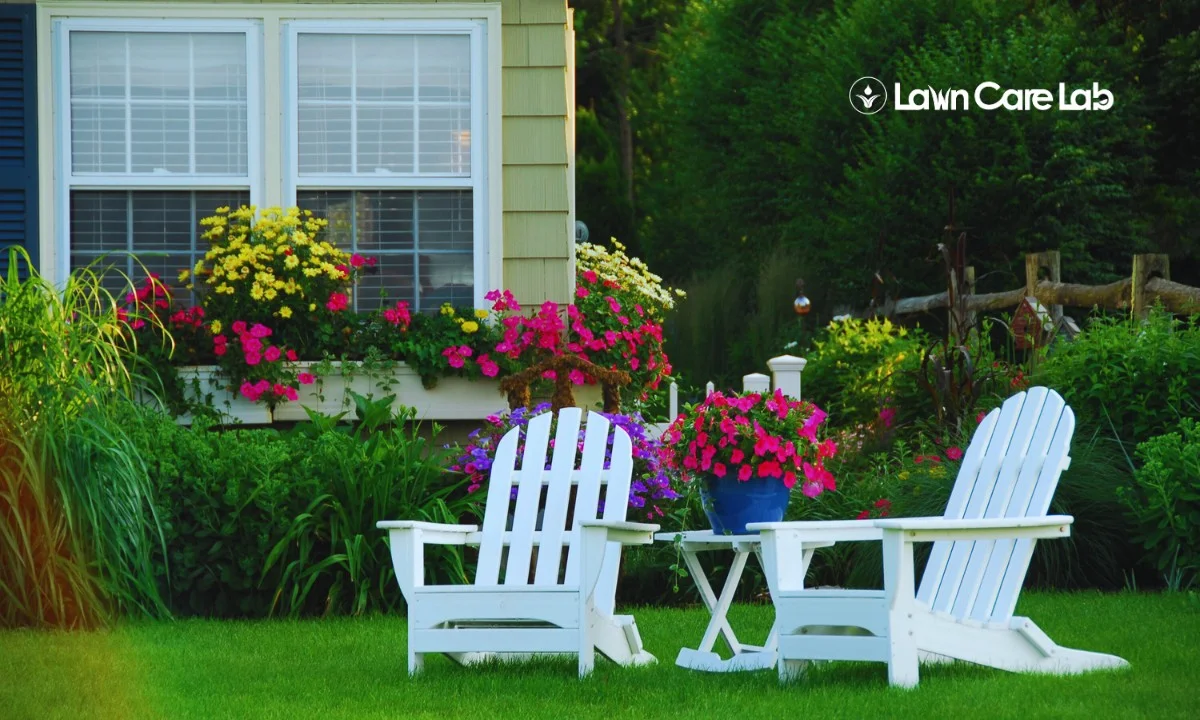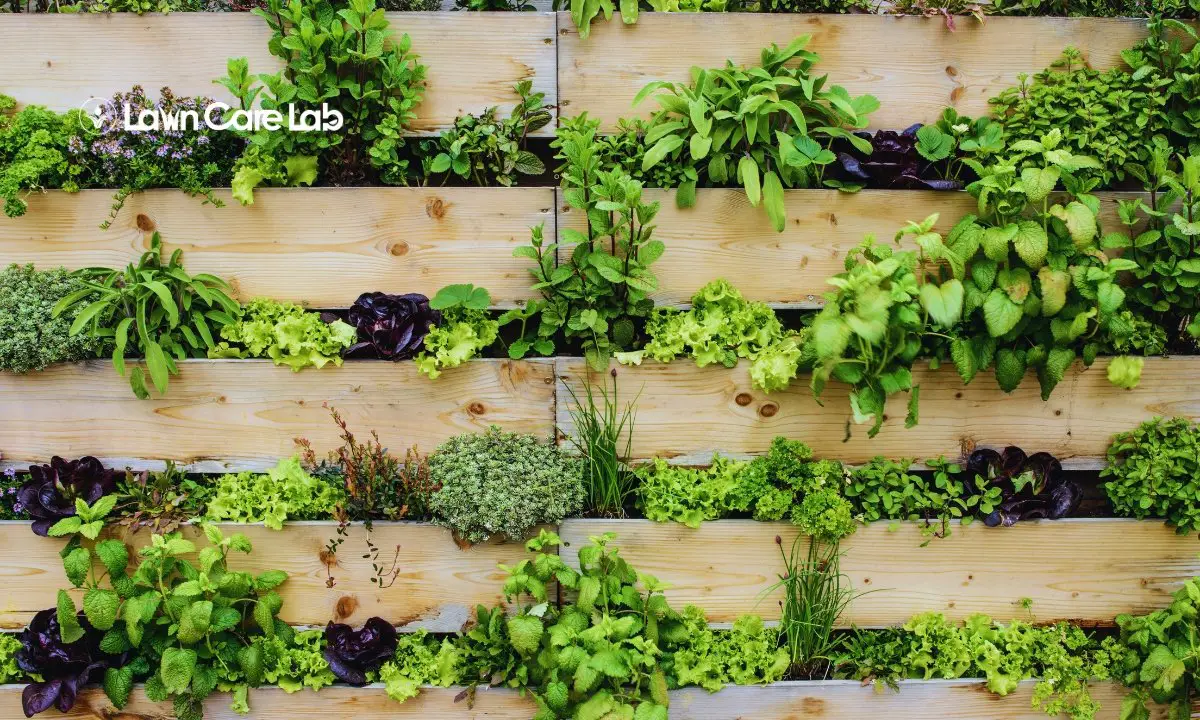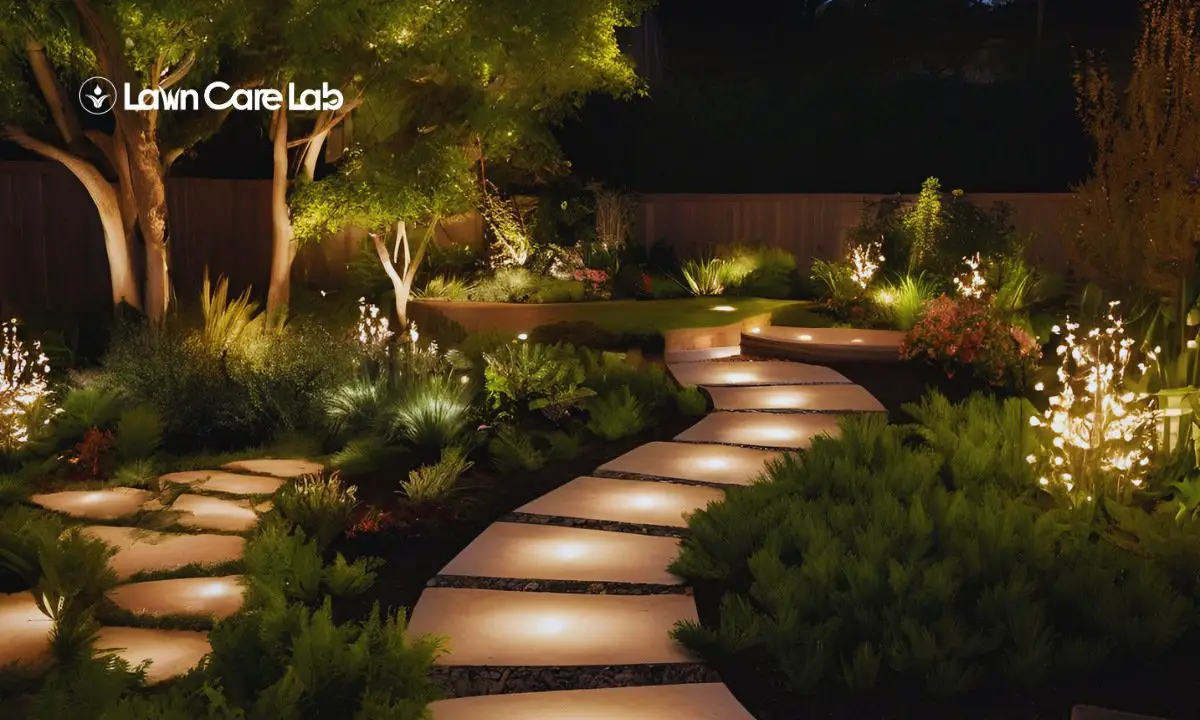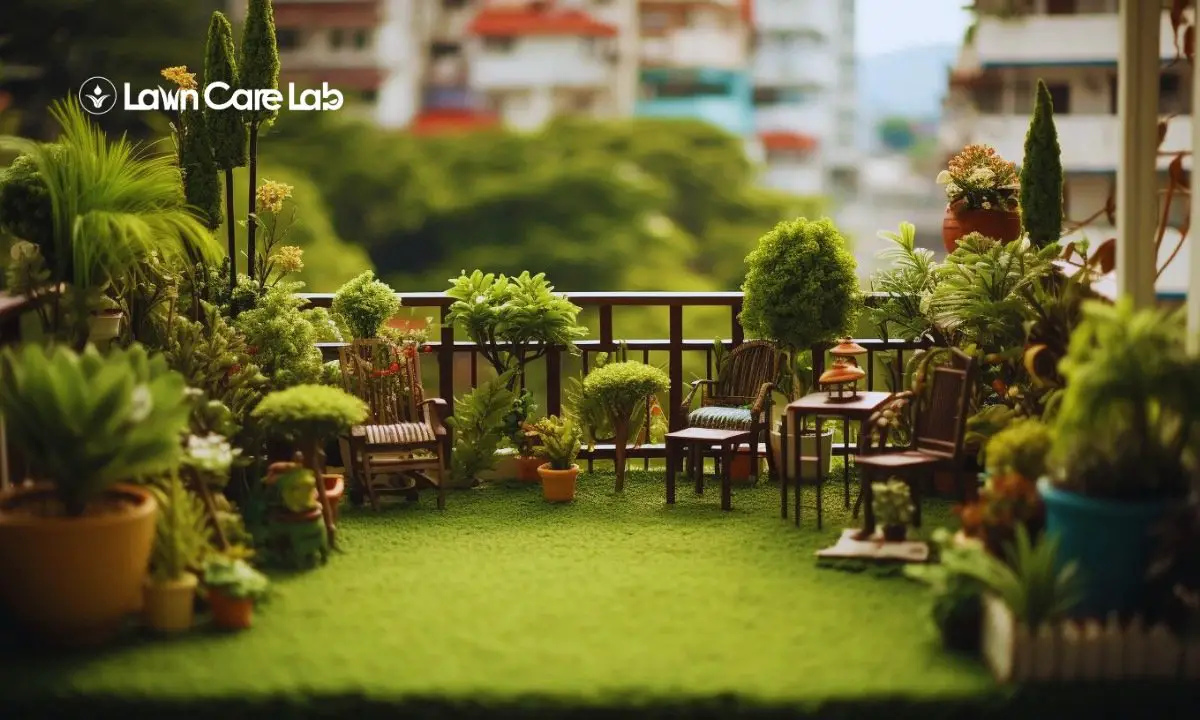Think about having the colors of Monet’s garden at your disposal. You’re not just cutting grass but creating an outdoor spectacle. A bit of color theory can make your backyard an intriguing art piece.
Now, wear your gloves and delve into the colorful realm of tones and shades. We’ll discover how to seamlessly merge colors, reflect on their psychological effects, and uphold uniformity.
Table of Contents
Choose Complementary Color Schemes

Think of your garden as a blank canvas, ready to be painted with a mix of warm and cool shades. Blending opposite colors can create areas of interest and excitement, while similar colors can create a calm and consistent ambiance.
Now, let’s delve into how to use complementary color palettes in your garden layout.
Warm and Cool Hues
Complementary color schemes can enhance your garden’s look. It’s like creating a living artwork using color theory. Think of the vivid oranges and reds of autumn leaves against a serene blue sky. It’s visually appealing and invites the observer.
The powerful visual effect of these contrasting color palettes can’t be denied. Now, let’s delve into the captivating realm of analogous colors.
Analogous Colors for Harmony
Following our discussion about warm and cool tones, using analogous colors in your garden’s layout can make it visually striking and balanced.
Picture a palette based on a color wheel, where neighboring shades are ready to be incorporated into your landscape. This color strategy creates a smooth transition, much like a sunset transitioning to dusk.
However, the key isn’t just selecting colors randomly but carefully coordinating them to tell a story or create a mood.
Contrasting Colors
Let’s talk about contrasting colors in yard design. Colors that clash in a pleasing way can turn a green space into a lively tableau. Imagine red poppies against a green field or blue forget-me-nots against lush leaves.
This is where color theory really comes to life in exterior design. If you’re into drama, contrasting colors can seriously boost your house’s street appeal, turning your yard into a living masterpiece.
Go ahead, be daring and imaginative, and let your garden narrate its own kaleidoscopic tale.
Consider Color Psychology and Meanings

Imagine your garden as a canvas where you’re creating a vibrant masterpiece. Ponder over the emotions you aim to provoke: maybe a splash of dynamic reds and yellows to captivate attention or calming blues and greens for a serene retreat.
Energetic and Soothing Colors
Color selection is crucial in garden design. Bright colors like reds and yellows create a lively and joyful atmosphere, perfect for entertaining or active areas.
Choose blue and green hues if you’re looking for a calming effect. They promote relaxation and are ideal for quiet spaces.
Balance energy and peace in your garden with a mix of vibrant and calming colors. Let color psychology guide your design.
Mystical and Royal Colors
Add regal purple flowers and plants to your garden for a luxurious and captivating touch.
Here’s a quick guide:
- Introduce different types of purple flowers to keep it interesting.
- Include mysterious plants with purple leaves to maintain the royal ambiance.
- Use contrasting colors with purple to make it pop.
- Add a touch of gold to amplify the royal vibe.
Once you grasp the meaning behind these colors, you’ll be closer to creating a garden fit for a king.
Next, let’s dive into how to arrange these colors effectively.
Strategically Arrange Different Colors

Plan your garden’s color scheme thoughtfully. Let matching shades merge seamlessly, and use vibrant colors for striking centerpieces. Gradual shifts between colors are visually more pleasing.
Mass Similar Hues
Imagine turning your lawn into an art canvas, using different hues to make it visually stunning. This technique, called mass planting, is perfect for bringing out color harmony and triggering positive responses.
In particular, bright shades make an instant bold statement.
Here’s how you can play around with colors:
- Use different shades of a single color for a cohesive look.
- Mix and match opposite colors for a lively contrast.
- Create a gradient effect with colors moving from light to dark.
- Try color blocking with bold, contrasting shades side by side.
In the end, you’re aiming for a lawn that’s not just eye-catching but also emotionally captivating.
Use Bold Colors
Consider enhancing your garden’s appeal with a strategic use of bold colors. Your green space can easily be transformed into an eye-catching work of art with the right mix of colors.
Experiment with daring color schemes for your lawn. Try deep purple, ocean blue, and emerald green as the main colors, and add accents like fiery red, electric green, and hot pink.
Add attention-grabbing shades like sunflower yellow, tangerine orange, and midnight black to create a dynamic visual experience on your lawn canvas. Let your creativity flow and paint a stunning masterpiece.
Transition Colors
To create a visually stunning garden, it’s important to organize transition colors thoughtfully for a smooth progression. This color-merging technique can transform your green space into a masterpiece.
Add gradient effects to your garden to create a magical atmosphere with hues that blend into each other.
For a flawless color shift in your garden, think about these creative suggestions:
- Play around with different tints of the same color, beginning from the darkest to the lightest.
- Bring in a contrasting hue for an audacious and dramatic impact.
- Opt for flowering plants that alter color as they grow for a natural gradient.
- Merge different textures and forms to boost color transitions.
Keep in mind your garden is your artboard, and colors are your instruments. Create a captivating and intriguing masterpiece with your color choices.
Select Coordinating Hardscapes and Plants
Visualize your garden as a masterpiece; each plant and hardscape acts like a painter’s brush stroke.
Selecting stones and greenery that complement each other can help shape a balanced panorama in your backyard.
Feel free to experiment with colors on structures, as they can either blend or stand out against your garden’s color scheme, providing a central focus for your landscape.
Flowers, Foliage, and Paver Stones
A beautiful garden requires a careful selection of flowers, foliage, and paverstones. Use the color theory to master the art of combining colors, as each carries symbolic meanings.
For a balanced garden, choose a color scheme that complements your house’s exterior. Add contrast and depth with different shades and balance bright hues with soothing, cooler tones.
Painted Structures
Consider the hue of your painted features when picking out greenery and other landscaping elements. The right color combo can set the mood you’re aiming for. Select hardscapes and plants that complement each other for a consistent color scheme.
Here’s a little inspiration for you:
| Painted Features | Complementary Hardscapes | Matching Plants |
|---|---|---|
| Blue Shed | Grey stone path | Lavender |
| Red Pergola | Terracotta tiles | Roses |
| Green Fence | Moss-covered rocks | Ferns |
Now, it’s time to let your imagination run wild and create a lively, color-synchronized garden!
Maintain Color Consistency
Maintaining a uniform lawn color is like preserving a work of art. Regular upkeep, such as refreshing mulch, adding new plants, and power washing, will keep your outdoor space vibrant and well-designed.
Replace Mulch, Plants, and Power Wash
Maintaining a beautiful and vibrant lawn involves caring for the essentials such as refreshing mulch, replacing wilting plants, and power washing hardscapes.
Stay current with color trends to create an attractive, emotionally appealing outdoor space.
Renew the mulch, replace dying plants, and power wash the hardscape for a vibrant outdoor space.
Conclusion
Dive into the world of color theory and transform your garden into a visual spectacle.
Use soothing blues, passionate reds, and joyful yellows to create a vibrant and harmonious display.
Ensure your hardscapes and plants blend together seamlessly, maintaining a steady rhythm.
With color theory as your tool and your lawn as your canvas, you have the power to create an outdoor masterpiece.
Now, it’s time to unleash your creativity.
Frequently Asked Questions
What Kind of Budget Should I Expect for Redesigning My Lawn Using Color Theory?
Are There Specific Colors That Are Better Suited for Particular Types of Plants?
Can I Apply Color Theory to My Lawn if I Live in a Region With Extreme Weather Conditions?
How Often Should I Update or Change the Color Scheme of My Lawn?
How Can I Incorporate Color Theory Into My Lawn if I Have a Small Outdoor Space?
- How to Create a Lawn Care Schedule for Southern Climates - October 30, 2024
- How to Use Compost Tea to Boost Lawn Growth and Soil Health - October 23, 2024
- The Best Grasses for Saltwater-Exposed Lawns: Coastal Lawn Care - October 17, 2024




